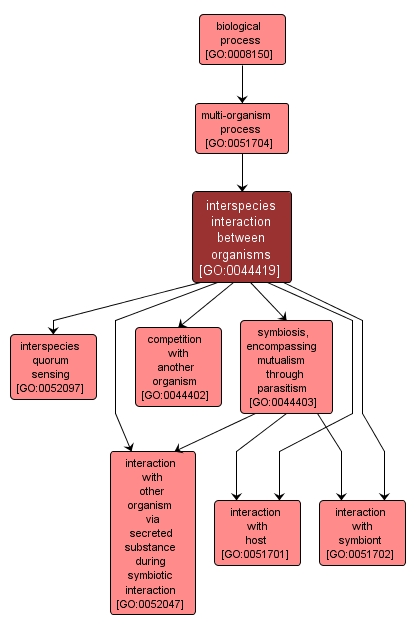GO TERM SUMMARY
|
| Name: |
interspecies interaction between organisms |
| Acc: |
GO:0044419 |
| Aspect: |
Biological Process |
| Desc: |
Any process by which an organism has an effect on an organism of a different species. |
Synonyms:
- interaction with another species
- interspecies interaction
- interspecies interaction with other organisms
|
|

|
INTERACTIVE GO GRAPH
|














